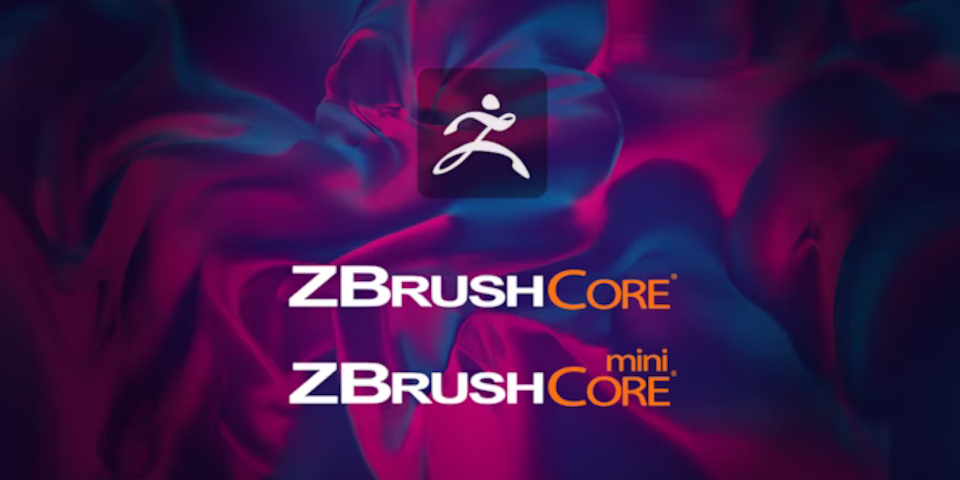Technology Innovation Institute TII Releases Falcon-H1: Hybrid Transformer-SSM Language Models for Scalable, Multilingual, and Long-Context Understanding
Addressing Architectural Trade-offs in Language Models
As language models scale, balancing expressivity, efficiency, and adaptability becomes increasingly challenging. Transformer architectures dominate due to their strong performance across a wide range of tasks, but they are computationally expensive—particularly for long-context scenarios—due to the quadratic complexity of self-attention. On the other hand, Structured State Space Modelsoffer improved efficiency and linear scaling, yet often lack the nuanced sequence modeling required for complex language understanding. A combined architecture that leverages the strengths of both approaches is needed to support diverse applications across environments.
Introducing Falcon-H1: A Hybrid Architecture
The Falcon-H1 series, released by the Technology Innovation Institute, introduces a hybrid family of language models that combine Transformer attention mechanisms with Mamba2-based SSM components. This architecture is designed to improve computational efficiency while maintaining competitive performance across tasks requiring deep contextual understanding.
Falcon-H1 covers a wide parameter range—from 0.5B to 34B—catering to use cases from resource-constrained deployments to large-scale distributed inference. The design aims to address common bottlenecks in LLM deployment: memory efficiency, scalability, multilingual support, and the ability to handle extended input sequences.
Source: /
Architectural Details and Design Objectives
Falcon-H1 adopts a parallel structure where attention heads and Mamba2 SSMs operate side by side. This design allows each mechanism to independently contribute to sequence modeling: attention heads specialize in capturing token-level dependencies, while SSM components support efficient long-range information retention.
The series supports a context length of up to 256K tokens, which is particularly useful for applications in document summarization, retrieval-augmented generation, and multi-turn dialogue systems. Model training incorporates a customized microparameterizationrecipe and optimized data pipelines, allowing for stable and efficient training across model sizes.
The models are trained with a focus on multilingual capabilities. The architecture is natively equipped to handle 18 languages, with coverage including English, Chinese, Arabic, Hindi, French, and others. The framework is extensible to over 100 languages, supporting localization and region-specific model adaptation.
Empirical Results and Comparative Evaluation
Despite relatively modest parameter counts, Falcon-H1 models demonstrate strong empirical performance:
Falcon-H1-0.5B achieves results comparable to 7B-parameter models released in 2024.
Falcon-H1-1.5B-Deep performs on par with leading 7B to 10B Transformer models.
Falcon-H1-34B matches or exceeds the performance of models such as Qwen3-32B, Llama4-Scout-17B/109B, and Gemma3-27B across several benchmarks.
Evaluations emphasize both general-purpose language understanding and multilingual benchmarks. Notably, the models achieve strong performance across both high-resource and low-resource languages without requiring excessive fine-tuning or additional adaptation layers.
Source: /
Deployment and inference are supported through integration with open-source tools such as Hugging Face Transformers. FlashAttention-2 compatibility further reduces memory usage during inference, offering an attractive efficiency-performance balance for enterprise use.
Conclusion
Falcon-H1 represents a methodical effort to refine language model architecture by integrating complementary mechanisms—attention and SSMs—within a unified framework. By doing so, it addresses key limitations in both long-context processing and scaling efficiency. The model family provides a range of options for practitioners, from lightweight variants suitable for edge deployment to high-capacity configurations for server-side applications.
Through its multilingual coverage, long-context capabilities, and architectural flexibility, Falcon-H1 offers a technically sound foundation for research and production use cases that demand performance without compromising on efficiency or accessibility.
Check out the Official Release, Models on Hugging Face and GitHub Page. All credit for this research goes to the researchers of this project. Also, feel free to follow us on Twitter and don’t forget to join our 95k+ ML SubReddit and Subscribe to our Newsletter.
Asif RazzaqWebsite | + postsBioAsif Razzaq is the CEO of Marktechpost Media Inc.. As a visionary entrepreneur and engineer, Asif is committed to harnessing the potential of Artificial Intelligence for social good. His most recent endeavor is the launch of an Artificial Intelligence Media Platform, Marktechpost, which stands out for its in-depth coverage of machine learning and deep learning news that is both technically sound and easily understandable by a wide audience. The platform boasts of over 2 million monthly views, illustrating its popularity among audiences.Asif Razzaq
https://www.marktechpost.com/author/6flvq/Google DeepMind Releases Gemma 3n: A Compact, High-Efficiency Multimodal AI Model for Real-Time On-Device UseAsif Razzaq
https://www.marktechpost.com/author/6flvq/A Step-by-Step Implementation Tutorial for Building Modular AI Workflows Using Anthropic’s Claude Sonnet 3.7 through API and LangGraphAsif Razzaq
https://www.marktechpost.com/author/6flvq/Meta Researchers Introduced J1: A Reinforcement Learning Framework That Trains Language Models to Judge With Reasoned Consistency and Minimal DataAsif Razzaq
https://www.marktechpost.com/author/6flvq/Sampling Without Data is Now Scalable: Meta AI Releases Adjoint Sampling for Reward-Driven Generative Modeling
#technology #innovation #institute #tii #releasesTechnology Innovation Institute TII Releases Falcon-H1: Hybrid Transformer-SSM Language Models for Scalable, Multilingual, and Long-Context Understanding
Addressing Architectural Trade-offs in Language Models
As language models scale, balancing expressivity, efficiency, and adaptability becomes increasingly challenging. Transformer architectures dominate due to their strong performance across a wide range of tasks, but they are computationally expensive—particularly for long-context scenarios—due to the quadratic complexity of self-attention. On the other hand, Structured State Space Modelsoffer improved efficiency and linear scaling, yet often lack the nuanced sequence modeling required for complex language understanding. A combined architecture that leverages the strengths of both approaches is needed to support diverse applications across environments.
Introducing Falcon-H1: A Hybrid Architecture
The Falcon-H1 series, released by the Technology Innovation Institute, introduces a hybrid family of language models that combine Transformer attention mechanisms with Mamba2-based SSM components. This architecture is designed to improve computational efficiency while maintaining competitive performance across tasks requiring deep contextual understanding.
Falcon-H1 covers a wide parameter range—from 0.5B to 34B—catering to use cases from resource-constrained deployments to large-scale distributed inference. The design aims to address common bottlenecks in LLM deployment: memory efficiency, scalability, multilingual support, and the ability to handle extended input sequences.
Source: /
Architectural Details and Design Objectives
Falcon-H1 adopts a parallel structure where attention heads and Mamba2 SSMs operate side by side. This design allows each mechanism to independently contribute to sequence modeling: attention heads specialize in capturing token-level dependencies, while SSM components support efficient long-range information retention.
The series supports a context length of up to 256K tokens, which is particularly useful for applications in document summarization, retrieval-augmented generation, and multi-turn dialogue systems. Model training incorporates a customized microparameterizationrecipe and optimized data pipelines, allowing for stable and efficient training across model sizes.
The models are trained with a focus on multilingual capabilities. The architecture is natively equipped to handle 18 languages, with coverage including English, Chinese, Arabic, Hindi, French, and others. The framework is extensible to over 100 languages, supporting localization and region-specific model adaptation.
Empirical Results and Comparative Evaluation
Despite relatively modest parameter counts, Falcon-H1 models demonstrate strong empirical performance:
Falcon-H1-0.5B achieves results comparable to 7B-parameter models released in 2024.
Falcon-H1-1.5B-Deep performs on par with leading 7B to 10B Transformer models.
Falcon-H1-34B matches or exceeds the performance of models such as Qwen3-32B, Llama4-Scout-17B/109B, and Gemma3-27B across several benchmarks.
Evaluations emphasize both general-purpose language understanding and multilingual benchmarks. Notably, the models achieve strong performance across both high-resource and low-resource languages without requiring excessive fine-tuning or additional adaptation layers.
Source: /
Deployment and inference are supported through integration with open-source tools such as Hugging Face Transformers. FlashAttention-2 compatibility further reduces memory usage during inference, offering an attractive efficiency-performance balance for enterprise use.
Conclusion
Falcon-H1 represents a methodical effort to refine language model architecture by integrating complementary mechanisms—attention and SSMs—within a unified framework. By doing so, it addresses key limitations in both long-context processing and scaling efficiency. The model family provides a range of options for practitioners, from lightweight variants suitable for edge deployment to high-capacity configurations for server-side applications.
Through its multilingual coverage, long-context capabilities, and architectural flexibility, Falcon-H1 offers a technically sound foundation for research and production use cases that demand performance without compromising on efficiency or accessibility.
Check out the Official Release, Models on Hugging Face and GitHub Page. All credit for this research goes to the researchers of this project. Also, feel free to follow us on Twitter and don’t forget to join our 95k+ ML SubReddit and Subscribe to our Newsletter.
Asif RazzaqWebsite | + postsBioAsif Razzaq is the CEO of Marktechpost Media Inc.. As a visionary entrepreneur and engineer, Asif is committed to harnessing the potential of Artificial Intelligence for social good. His most recent endeavor is the launch of an Artificial Intelligence Media Platform, Marktechpost, which stands out for its in-depth coverage of machine learning and deep learning news that is both technically sound and easily understandable by a wide audience. The platform boasts of over 2 million monthly views, illustrating its popularity among audiences.Asif Razzaqhttps://www.marktechpost.com/author/6flvq/Google DeepMind Releases Gemma 3n: A Compact, High-Efficiency Multimodal AI Model for Real-Time On-Device UseAsif Razzaqhttps://www.marktechpost.com/author/6flvq/A Step-by-Step Implementation Tutorial for Building Modular AI Workflows Using Anthropic’s Claude Sonnet 3.7 through API and LangGraphAsif Razzaqhttps://www.marktechpost.com/author/6flvq/Meta Researchers Introduced J1: A Reinforcement Learning Framework That Trains Language Models to Judge With Reasoned Consistency and Minimal DataAsif Razzaqhttps://www.marktechpost.com/author/6flvq/Sampling Without Data is Now Scalable: Meta AI Releases Adjoint Sampling for Reward-Driven Generative Modeling
#technology #innovation #institute #tii #releases












